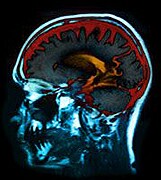
WEDNESDAY, Feb. 27 (HealthDay News) — A small new study has identified a distinct and unique pattern in the way brains of children with autism process information.
Researchers used electroencephalograms (EEGs) to track electrical activity in the brains of 30 children with autism and detected certain features in brain connections, according to the study, which was published Feb. 27 in the journal BMC Medicine.
Compared to other children, those with autism have more short-range links within different brain regions but fewer connections between more distant areas, said the researchers from Boston Children’s Hospital.
They said their findings may help improve understanding about certain behaviors in children with autism.
A brain network that has more short-range connections than long-range links helps explain why a child with autism may excel at specific, focused tasks such as memorizing streets, but is unable to integrate information across different brain areas into larger concepts, the researchers said.
“For example, a child with autism may not understand why a face looks really angry, because his visual brain centers and emotional brain centers have less cross-talk,” study co-first author Dr. Jurriaan Peters said in a hospital news release. “The brain cannot integrate these areas. It’s doing a lot with the information locally, but it’s not sending it out to the rest of the brain.”
Peters said the finding “may well change the way we look at the brains of autistic children.”
More information
The U.S. National Institute of Neurological Disorders and Stroke has more about autism.

